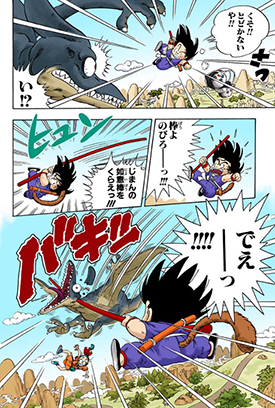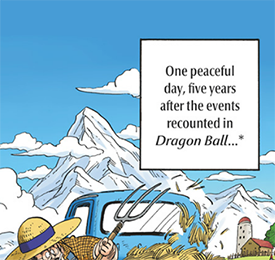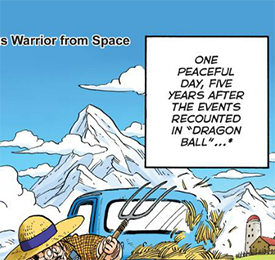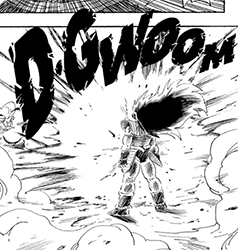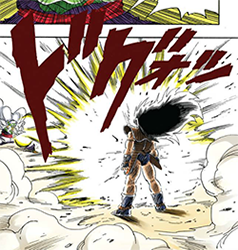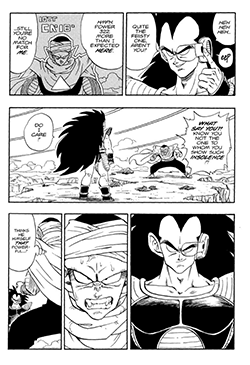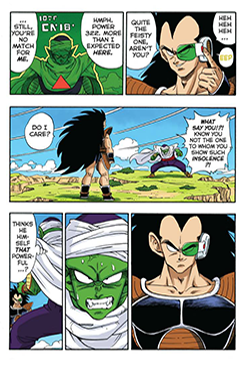One could easily make the case that Viz’s re-releases of the Dragon Ball franchise — as manga rather than anime — rival FUNimation’s over these last few years. Coming right off the “Viz Big” editions to the moderately-disastrous new “3-in-1” editions straight into a “Full Color” print edition can be pretty overwhelming to even the most dedicated reader, especially with the company now advertising four products side-by-side.
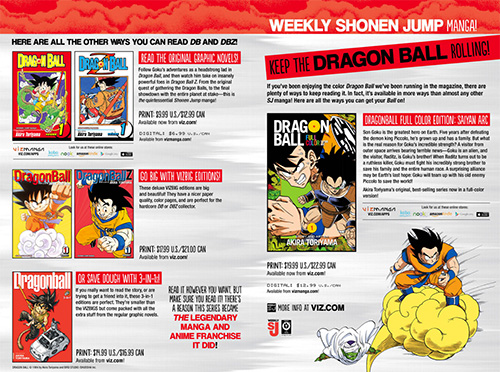
Viz first brought a digital version of the “Full Color” comics — an initiative by Shueisha in Japan, which began with print editions of the Saiyan and Freeza arcs and then a digital release of literally everything else — to their own version of Weekly Shonen Jump. Promises of a print edition with uncensored artwork (including original Japanese sound effects), a new font, and a large format size at a premium price were certainly enough to raise some optimistic eyebrows.
With the “Viz Big” editions having their own quirks and the “3-in-1” editions clearly not living up to their kanzenban imagery, would Viz’s “Full Color” print release be the final punchline in a string of “fool me once, fool me twice, fool me three times”…?
Quick Details:
| ISBN: | 1421565927 |
| Release Date: | 04 February 2014 |
| Publisher: | Viz Media |
| MSRP: | $19.99 |
| Contents: | Dragon Ball Manga Chapters 195-211 (“DBZ” Chapters 001-017) |
The review of this manga was made possible by your Amazon referral purchases. If you are interested in contributing to the site, please visit our “Donate” page.
Review By: Mike LaBrie (VegettoEX)
The “Full Color” initiative actually online began back in June 2009. Over a five-month period, Shueisha released — for free, in both Japanese and in English with Viz’s existing translation — the first 23 chapters of the series. After this abrupt end, things fell silent for nearly three years. In late 2012 the company released the original black-and-white/monochrome version of the manga to digital retailers, and then a print version of the Saiyan arc in the “Full Color” format. Soon after, the full digital strategy was laid out with them going back to the beginning as digital-only, and eventually they released the entire series in a colorized digital format.
These digital releases were not the first time fans could read the series in color, however. The “TV Anime Comics“, released over a five-year period between 2005-2010, took the old “Film Anime Comics” format of adapting the animation into a comic book format via screenshots with dialog bubbles. While Viz did not release the “TV Anime Comics” in North America, plenty of other countries — such as Germany in the below example — did receive these books.
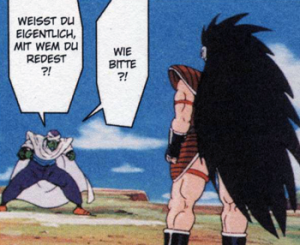
That all being said, reading the series in color is clearly an intriguing novelty no matter how it is presented. What separates the “Full Color” version from the “TV Anime Comics” is that the raw, base illustrations are Akira Toriyama’s and his alone, rather than various animators’ takes on the characters and events from the TV series.
Packaging:
Viz has dabbled in “Collector’s Edition” formats with Dragon Ball before, but even taking the “Viz Big” into consideration, the “Full Color” release is the most “premium”-type of product we have ever received.
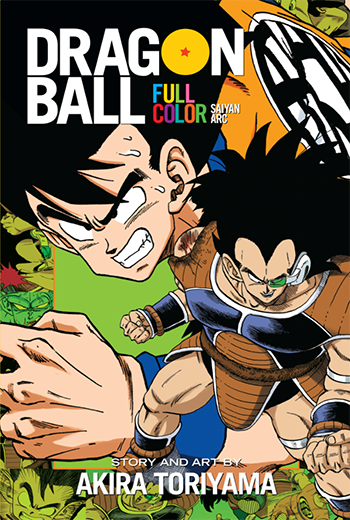
First thing’s first: the book is absolutely huge. At 10.1 x 6.6 inches, it is the largest we have ever seen the series, and it dwarfs the original Japanese version (itself released at standard tankōbon size):

Even when compared to other “premium” releases — Japanese and American alike such as the Kanzenban and Viz Big respectively — the “Full Color” English print release overshadows them all.
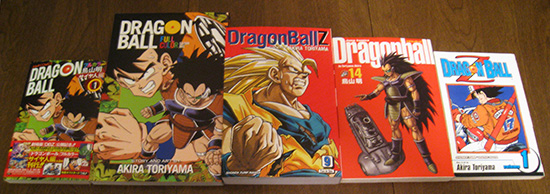
There is no discernible difference between Shueisha’s original Japanese and Viz’s English release other than the language itself. The colors and lines are just as eye-popping in one release as they are in the other. The paper quality seems to be about the same, as well: not quite glossy, but with a nice thickness.
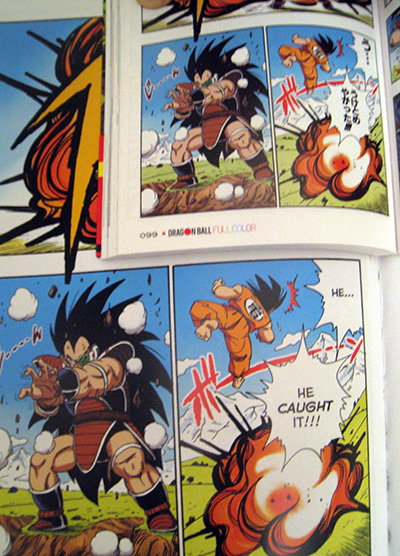
In addition to the standard table of contents, Viz’s release includes — for the first time ever in a Dragon Ball release of theirs — translator’s notes in the back specifically for the sound effects.
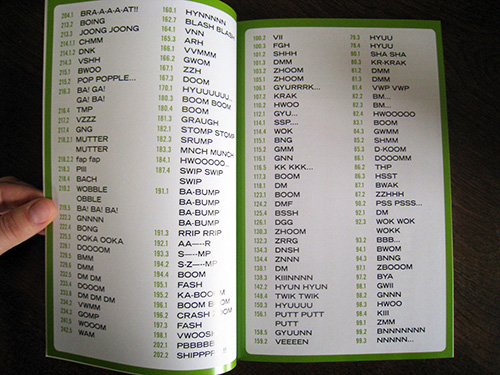
The only major concern right now is the binding. After just a few brief reads, it already feels as if the pages are going to break and fall out.
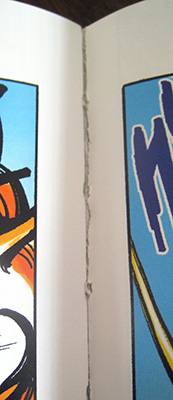
Perhaps the only thing “missing” from Viz’s release — at least thus far with just this first volume, since we have no idea what will be included going forward — are the various Q&A sessions from the original Japanese releases. While they were clearly a lead-up to the new film Dragon Ball Z: Battle of Gods and hinted at story bits from said film, the vast majority of the answers were general-information about the franchise and its world. It is sad that they are missing from the official English release, but we can at least take care of you in that regard.
Content:
If you are a Dragon Ball fan in North America, no matter when it was you first got into the series, by now you are intimately familiar with the early Saiyan arc. Heeeeeeere’s Raditz!
Though the original manga in Japan was always just called Dragon Ball all the way through its 519 main chapters / 42 collected volumes, Viz adopted the “Z” moniker from the TV series for their English-language release. The “Z”-break has popped up a lot more in Japan over the years as well, perhaps most notably in the form of the Dragon Ball Z TV series “Dragon Box” DVD sets starting with Dragon Ball Z before then moving back to the first series, then Dragon Ball GT, then the movies.
The “Full Color” version of the manga started the same way both in Japanese from Shueisha and in English from Viz: Raditz!
Starting here in Chapter 195, the reader is dropped into the series after a multi-year time skip and expected to know who a whole bunch of characters are, how they know each other, what they have experienced together, etc. One might think it would be difficult to get your bearings, but as most North American fans can attest to, it is not so bad. Akira Toriyama’s story-telling makes things blatantly obvious, and even the smallest mannerisms between characters speak volumes here more than most other authors and series are capable of.
And what a great story arc it is. Bombshells are dropped (“By the way, you’re an alien!”) while sub-plots foreshadow eventual character developments and revelations. It is easy to see how a reader might be tricked in to thinking that Toriyama planned things out like a responsible author! Instead, his talent shines as he cements the move to serious story-telling with battles of planetary proportions with galactic repercussions.
I often joke about how many times I have “purchased Raditz” via VHS, DVD, Blu-ray, manga, and even video game releases, but the truth is that the Saiyan arc is as exciting for me to read in 2014 as it was my first time back in 1996.
Presentation:
“Oh thank goodness they fixed the font!” cried every fan in unison.
In its original digital release via Weekly Shonen Jump, Viz was forced to use an apparently-Shueisha-mandated Optima Nova Condensed font. It looked basic and amateurish, it felt out-of-place from literally everything else in Weekly Shonen Jump, and it thankfully no longer looks this way in print. Whatever held Viz back on the digital release seemingly no longer applies to their print version, which now uses the same type of text styling as the rest of their releases.
Great, so the font was fixed! That means the translation was fixed, too, right…?
Depending on who you ask, the translation may not even need “fixing” in the first place. That being said, what may have been a good idea to someone at Viz in 1998 — namely Piccolo’s manner of speaking — seems absolutely bizarre in 2014. OK, it felt bizarre back in 1998, too.
An example — one we have used before, but epitomizes the situation — is:
なんだと!!きさまだれにむかってしゃべっているのかわかっているのか!!
Nan da to!! Kisama dare ni mukatte shabette iru no ka wakatte iru no ka!!
In this particular case, Piccolo is speaking neither particularly old man-ish (as he sometimes is while still a villain), nor polite, but the line here is rather stiff and un-contracted. We would go with something like:
What was that?! Do you have any idea whom you are addressing?!
Viz, however, went with:
What say you?! Know you not the one to whom you show such insolence?!
Examples like this are the very definition of translator’s-choice and deciding how literal, how flowery, and how obvious to go in the adaptation. In Piccolo’s case, however, it is not a decision we would have gone with, and were hoping for a little bit of tweaking here with a fresh start in the “Full Color” version… if not in the digital release, but possibly over here in the premium print edition. This line may not seem like a “big deal”, but it can get a little out-of-hand at times, and consistency is lost when characters like Murasaki that do speak in an archaic style in Japanese do not get an appropriate treatment in Viz’s translation.
“Light of Death” is still super-weird, too.
The Viz edition has always been an oddball mish-mash of omitting certain things and setting new precedents for seemingly little reason wrapped up in what is overall a rather faithful translation. It is certainly not up to the level of the original Sailormoon Mixx Comics edition necessitating an entire new translation, but it would have been greatly appreciated. With the “3-in-1” editions and now the “Full Color” editions keeping the same-old translation as before, it seems we are out of luck.
As with the digital editions, one “change” in Viz’s release comes in the form of unaltered artwork (with the exception of Mr. Popo’s lips, which Viz has confirmed will remain edited). This includes the sound effects being left in their original Japanese, preserving that aspect of the original artwork as well.
With all the Viz-specific items out of the way, what are we left with? Oh, right! Full color Dragon Ball manga!
Akira Toriyama had an amazing knack for being able to use black-and-white to its fullest extent with limited shading and tone on top of detailed backgrounds. Whereas other manga authors — even those that were directly inspired by Toriyama such as One Piece‘s Eiichirō Oda — could get lost in busy action shots, everything that Toriyama drew had a clean layout that was easy to grasp. It has always been one of the most pleasant series to look at, and it would be easy for color to potentially dirty that up.
What we end up with is something that magically enhances the original artwork. It both honors Toriyama’s own drawings and breathes new life into them. It accomplishes — with grace and respect — everything that companies like FUNimation, and even Toei with Kai, have failed to do with the corresponding TV version.
Using the existing color chapters as a base, Shueisha’s “Full Color” reversioning of the manga gives the series that modern pop with an old-school flair underneath. Without the need to “upscale” a video stream, the original inking is just as vibrant as ever, while the color palette has just enough of a subdued tone to it to still feel at place for its time.
Final Thoughts:
With the exception of concerns over the binding (and the same explanations since 1998 as to why Piccolo talks so strangely), Viz’s “Full Color” print edition is an easy recommendation. Since the series is no longer being digitally published in Viz’s Weekly Shonen Jump*, the print edition is the way to go whether you like it or not.
You should and will like it, though! Some of the alternatives are hardly worth your time, and assuming Viz sticks with it through to the end (and hopefully loops back around to the actual beginning again), we have a great new release for our bookshelves!
(*It may be worth noting that Viz is also releasing collected editions of the “Full Color” comic digitally alongside the print editions, which comes separately from the Weekly Shonen Jump app. These collected editions include the updated font change.)
Purchase This Item:
Volume 1 in the “Saiyan Arc” of Viz’s “Full Color” was originally released 04 February 2014, and may be available for purchase at the following retailers:

